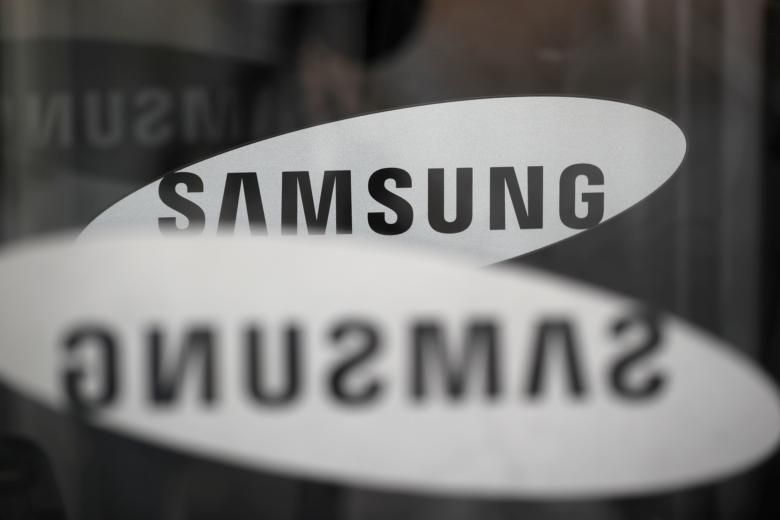Samsung Electronics said on Friday that operating profit fell to 6.5 trillion won ($5.56 billion) in the quarter ended June, falling 56% year on year in the face of sinking DRAM prices.
Samsung Electronics Co.’s quarterly profit more than halved after a global industry downturn and trade tensions hammered demand for its chips and high-end smartphones.
The South Korean maker received only limited tail winds from the U.S. ban on Chinese smartphone rival Huawei Technologies, with operating profit dropping 60% in the quarter ended March.
Korea’s largest company reported a less-than-expected 56% fall in operating income to about 6.5 trillion won ($5.6 billion) in the June quarter — but that was helped by an unspecified one-time gain from a customer that analysts estimate could have topped $800 million. The company won’t provide net income or break out divisional performance until it discloses final results toward the end of the month. Its shares slid as much as 1.5% in Seoul.
Samsung — the world’s biggest producer of smartphone screens, semiconductors and mobile phones — is grappling with plateauing demand in the face of an economic slowdown. Its memory chips remain a barometer for everything from computers to smartphones and have been one of the hardest-hit components since Trump administration tariffs took effect in May. Jitters over Samsung’s biggest cash cow grew this week when Japan slapped export restrictions on materials needed for display and chip production, potentially hammering also rival SK Hynix Inc.
“Considering the structural downturn in memory prices and the mobile business, it’s unlikely Samsung would exceed earnings estimates” in the second half, Meritz Securities analyst Kim Sunwoo said in a report after the release. “As uncertainty over earnings have expanded on macro issues and around each division, the possibility of a special shareholder return plan has decreased significantly.”

Unpredictability surrounding the trade war between the U.S. and China — where Samsung earns the bulk of its revenue — has sustained a downturn in the chip industry as smartphone demand tapers off and the pace of datacenter construction decelerates. Micron Technology Inc., the largest U.S. maker of computer memory chips, said last week it intended to “meaningfully” reduce its spending in its fiscal year 2020, on top of plans to idle 5% of production of memory chips in the last quarter.
In the second quarter, contract prices for 32-gigabyte DRAM server modules fell 19.3% compared to the previous quarter while those for 128 gigabit MLC NAND flash memory chips skidded 5%, according to inSpectrum Tech Inc. DRAM price drops are projected to widen to up to 15% in the current quarter and as much as 10% in the fourth quarter, TrendForce has estimated.
“Memory prices are likely to keep sliding due to the ongoing trade war,” said Song Myung-sup, an analyst at HI Investment & Securities Co., adding that shipments should be stable as Chinese customers who haven’t received products from U.S. chipmakers are likely to increase orders. “Samsung’s smartphone business will start to benefit from the U.S. ban on Huawei” in the second half, he added.
Japan’s move to restrict the export of chip materials to South Korea also alarmed industry players because it threatened to derail domestic production. But some analysts say it could boost memory prices and remain hopeful that Japan won’t pull the plug on the world’s largest memory chip-making companies.
A one-off gain for the display business assuaged some of Samsung’s pain. The company remains the foremost producer of high-margin organic light-emitting diode displays, but hit a snag last year when supplies to Apple Inc. suffered after the marquee iPhone X fared worse than expected.
Samsung profit surpassed analysts’ average forecast for 6.1 trillion won thanks to a one-off gain. Its display division had sought financial compensation from Apple because actual shipments of OLED displays for iPhones fell short of contractual estimates, the Electronic Times has reported. The company could have secured as much as 1 trillion won in compensation from a U.S. customer, Citigroup Global Markets has estimated.
But its chips division remains both the biggest driver of profit and the one most vulnerable to an economic downturn.
“It will take more time to see the recovery of business sentiment for semiconductors,” IBK Securities analyst Kim Woon-ho wrote in a July 2 note. “Demand would rise in 2H but it will be lower than the prior estimates.”






